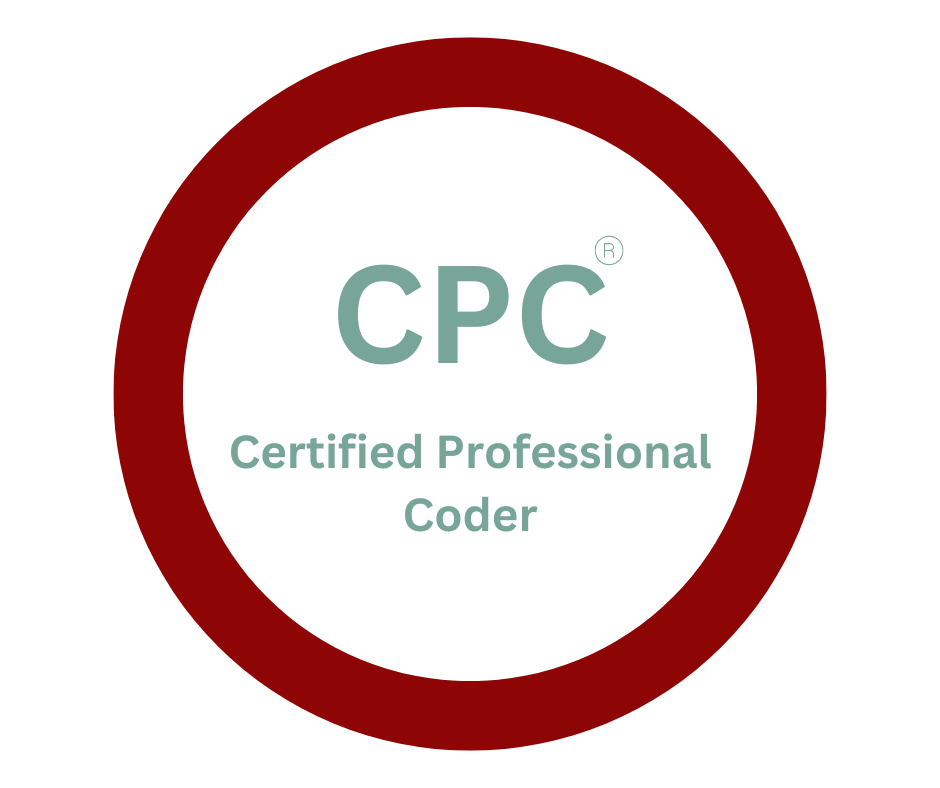
Certified Professional Coder (CPC®)
Certified Professional Coder (CPC®)
Embark on a rewarding career in medical coding with the Certified Professional Coder (CPC®) credential. As a CPC®, you'll become a vital part of the healthcare industry, ensuring accurate coding of diagnoses, procedures, and services for proper reimbursement. This certification signifies your expertise in code selection and adherence to medical coding guidelines, enhancing your professional credibility and opening doors to diverse job opportunities. Join the ranks of certified professionals making a difference in healthcare today!
*In-person classes take place in Phoenix, AZ, and start every second week of January, July, and November
Course Objectives:
Define the purpose of the CPT®, ICD-10-CM, and HCPCS Level II code book
Demonstrate comprehension and application of the official ICD-10-CM coding guidelines
Apply coding conventions accurately when assigning diagnoses and procedure codes
Identify and utilize information found in the appendices of the CPT® code book
Describe the process for determining the levels of E/M services
Code a diverse range of patient services using CPT®, ICD-10-CM, and HCPCS Level II codes
Summarize the key features of HCPCS Level II codes
Demonstrate proficiency in coding operative reports and evaluation and management services
20 Week CPC Online Course Description
-
Medical coding terminology and issues are introduced, including the meaning and importance of a compliance program in a medical setting. The significance of accuracy, ethics, and continuing education are emphasized.
-
Basic human anatomy is provided and reviewed. The meanings of medical and surgical terms are reviewed and how they are broken down for interpretation. Accurate documentation of procedures and services is paramount for coding and reimbursement. In this chapter, students will be introduced to the rules and guidelines necessary.
-
Diagnostic coding through medical necessity, coding guidelines, and how-to steps are presented along with coding conventions, coding tips, and understanding ICD-10-CM Volumes 1 and 2.
-
A closer review of the Official Coding Guidelines and application. An addendum introduces the ICD-10 format, which is informational only and not included in the CPC examination.
-
HCPCS codes in relation to reporting physician and/or other provider procedures and services are discussed. Introduction to CPT®: coding conventions usage, different sections, Appendix and Index will be reviewed.
-
Evaluation and management (E/M) codes are described with the fundamentals in preparation and application to medical claims. Each section explains a topic pertinent to E/M coding such as the definitions of key components, reporting consultations, emergency department visits, critical care, preventive medicine, and home health services.
-
From the basics of E/M coding, the students advance to actual reporting of these codes based on provider information. A step-by-step approach to E/M auditing is presented with the various types of audits common to medical practices.
-
The AMA’s coding modifiers and coding guidelines are defined. Application of proper use of AMA modifiers will be examined.
-
Descriptions of each section of surgery codes are in-depth and begin with the integumentary system. Definitions and anatomical descriptions give an overview of these code ranges, which are updated annually to reflect any changes in health care.
-
One of the largest sets of codes in the CPT® is the musculoskeletal system. The application, relevant definitions, anatomical descriptions, and an overview of the various procedures are demonstrated.
-
Students are introduced to respiratory diseases with subsequent treatment and the functions of the system’s organs. The respiratory system codes with the application and proper documentation are defined.
-
Cardiothoracic surgery of the heart, coronary arteries and great vessels are discussed in this chapter, in addition to pacemaker and cardioverter-defibrillator placement, surgery, therapeutic and diagnostic vascular procedures.
-
This chapter covers the digestive process, diagnostic tests, procedures and endoscopies pertaining to the digestive system, Hemi and Lymphatic systems and Mediastinum and Diaphragm.
-
The urinary system range of the CPT® manual includes codes specific to males and females and explores the general concepts and anatomy of the urinary system as well as the anatomy and consequent services and procedures specific to each gender. Three sections of CPT® codes are reviewed in this chapter of the PMCC. The chapter reviews the male genital system, which is followed by an overview of the female genital system. The third set of codes discussed reviews the delivery and maternity care codes.
-
This chapter covers coding procedures and techniques of the skull, meninges and the brain, spine and spinal cord, extracranial nerves, peripheral nerves, and the autonomic nervous system.
-
This chapter covers procedures and coding pertaining to the eye and auditory system are discussed. The final code in the chapter reports the use of an operating microscope.
-
A discussion of the ASA relative values, anesthesia guidelines, modifiers, code organization and crosswalk, as well as a review of the different types of anesthesia available for patients and the methods in which they are administered is covered in this chapter. A discussion of radiological procedures and coding guidelines including body positions and relationship terms, radiological supervision and interpretation codes, technique and equipment issues, diagnostic radiology, MRIs, ultrasounds, and chemotherapy administration are covered in this chapter.
-
This chapter covers procedure and coding issues pertaining to pathology and laboratory. Topics include organ and disease-oriented panels, drug testing, therapeutic drug assays, consultations, hematology and coagulation, blood counts, hemograms and differentials, bone marrow procedures, blood clot studies, transfusion medicine, microbiology, anatomic pathology, and CLIA requirements.
-
This chapter discusses immunization and administration for vaccines/toxoids, therapeutic and diagnostic infusions, psychiatry, dialysis, gastroenterology, ophthalmology codes, cardiovascular codes, physical medicine, and other special services that are found in the Medicine section of the CPT®
-
Final Exam reviewed and an overall review prior to the Certification Exam.
Embark on a rewarding career in medical coding with the Certified Professional Coder (CPC®) credential. As a CPC®, you'll become a vital part of the healthcare industry, ensuring accurate coding of diagnoses, procedures, and services for proper reimbursement. This certification signifies your expertise in code selection and adherence to medical coding guidelines, enhancing your professional credibility and opening doors to diverse job opportunities. Join the ranks of certified professionals making a difference in healthcare today!
*In-person classes take place in Phoenix, AZ, and start every second week of January, July, and November
Upcoming Classes
CPC Online
July 17th, 2024- 5:30 PM - 9:30 PM AZ
CPC In-Person
July 16th, 2024- 5:30 PM - 9:30 PM AZ





